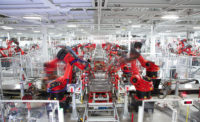Locker room talk. A fellow was saying he was in bed for ten days after having his big toe operated on. “Ten days for your big toe?” “Yeah, the doc said my joint was shot and if I didn’t have a pin put in, I couldn’t walk and would be in a wheelchair the rest of my life. Man, I’d wake up in the middle of the night and my toe was killing me.”
We take our bodies for granted, even down to our big toe – until something goes awry. The back goes out and you’re lying on the floor trying to ease the pain. Arthritis wrecks a hip and it’s painful to get in and out of the car. A knee wears out and you can’t drive without stopping, putting the car in park, and flexing your stiff, aching knee. Tear a rotator cuff and you can’t lift your arm over your shoulder.
Types of pain
In 2018, the Bureau of Labor Statistics reported almost one million injury and illness cases involving days away from work (900,400). The average number of days lost was eight. Most work-related injuries involve acute pain, defined as coming on suddenly and caused by something specific. It is sharp in quality. Acute pain usually does not last longer than six months.
In 2014, BLS reported 197,870 cases of soreness and pain, with an average nine days away from work.
An estimated 50 million U.S. adults experience chronic pain, and 19.6 million have high-impact chronic pain. Chronic pain is ongoing and usually lasts longer than six months. It can continue even after the injury or illness that cause it has healed or gone away. Pain signals remain active in the nervous system for weeks, months or years, according to the Centers for Disease Control and Prevention. High-impact chronic pain is severe enough to interfere with life or work activities most days.
Another perspective on the prevalence of pain: More than 300,000 people each year have total hip replacement surgery to end pain. More than 600,000 knee replacements are performed annually, according to the Agency for Healthcare Research and Quality.
The emotional toll
Pain doesn’t just affect the body. It takes an emotional toll. Pain sufferers can become negative, low and full of frustration. They can be angry. “Why me?” Feeling down can spiral into anxiety, low esteem, isolation, depression, dependence or abuse of painkillers, even contemplating or committing suicide. The connection is clear between pain and working safely.
Chances are you’re still working, not retired, when you get arthritis, a sprain or tear, a fracture, a displaced joint, even down to your big toe. Maybe it happened on the job. No matter, you’re dealing with pain. Recovery and rehab can be painful. Just walking can be a pain radiating down your leg or knifing your lower back.
Present but distracted
“Presenteeism” is being at work physically, but not engaged mentally. Usually the causes come from life stresses – financial or marital problems, problems with children, caring for aging parents, depression and anxiety brought on by dark situations. Living with pain has the same effect. You’re at work but distracted. Maybe you’re on restricted duty, switched to lighter work, or had a job accommodation. That’s if you’ve talked about your pain, and not just in the locker room. Your boss knows. Coworkers know. It’s like reporting an injury. How many injuries go unreported? How many employees, sitting in front of a computer all day or building houses, are going to be open about prescription meds they’re taking for pain? No, that’s a private matter.
With definite possible safety consequences. Fatigue. Frustration. Memory loss and lack of concentration. Mind not on task. Taking shortcuts. Strong prescription meds also can have these effects. So can pains that often come when you hit your 50s and 60s. In 2018, almost one in three (29%) baby boomers age 65-72 were still on the job or looking for work, according to the Pew Research Center. Two in three (66%) of younger boomers, age 54 to 64, were still in the workforce in 2018. Working longer can be a good thing personally, a more secure retirement, and good for the economy, keeping the labor force growing.
Not necessarily good for safety at work, though. Safety and health pros have been inundated in recent years with articles and seminars and talks on the aging workforce. Let’s zero in on just one aspect of aging on the job – the increasing possibility of working with or through pain. And keeping it to yourself.
We’ll talk about pain to pals in the gym. Complain about it at home and to friends. But on the job it’s a different story. The American ethos, especially for males, is tough it out. Man up. Suck it up. Big boys don’t cry. John Wayne didn’t whine. You can be in construction, nursing, making steel, delivering express packages, you have aches and pains you try to live with. And for the sake of holding on to your job, you’re not going to do much complaining. Older workers already feel vulnerable. “Ah, he’s not on his game like he used to be.” “She’s on the downhill slide.” “Does he still have what it takes? Has he lost something off his fastball?”
A stereotype is at work here. A stigma. A fear. For any number of reasons workers will hide their pains, whether the pain is due to off the job or job activity. It’s accepted an injured worker will have pain. Acute pain. It’s less accepted to acknowledge pain on a scale of one to ten lingering on, becoming chronic after the injury heals. Given the safety ramifications, the subject of pain, pain management, dangers of mismanagement, should be talked about in safety meetings, in safety committees, during one-on-one job safety contacts, and on the radar of safety and health departments. Bring pain out of the closet.
Dave Johnson, ISHN Editor,
johnsond@bnpmedia.com




